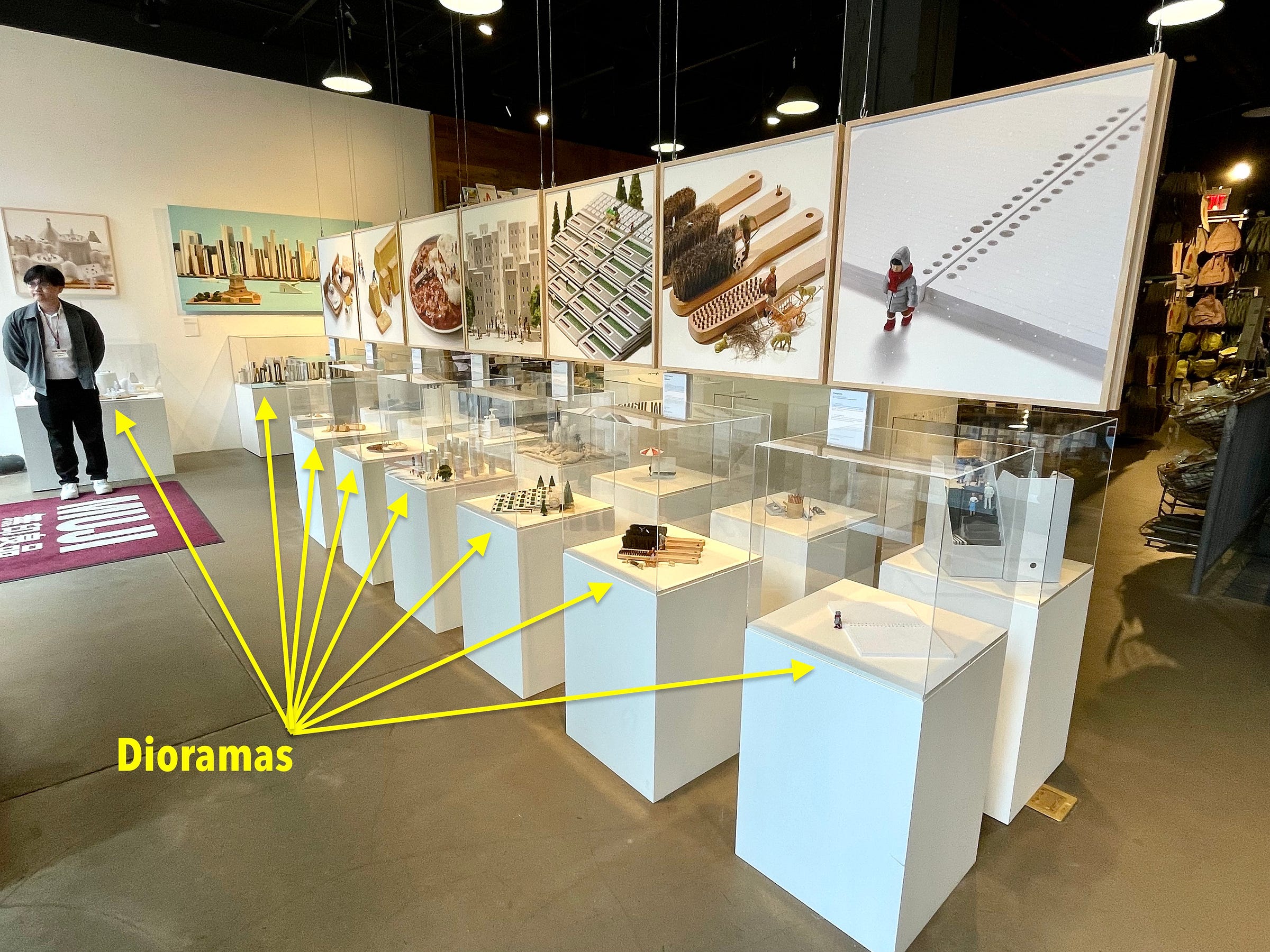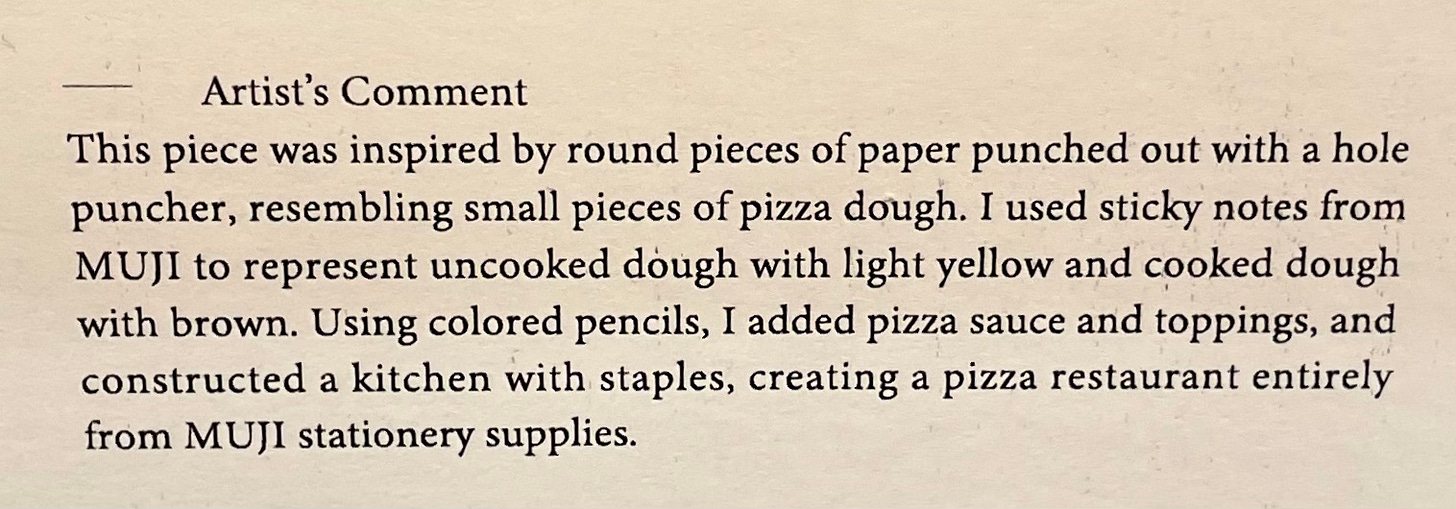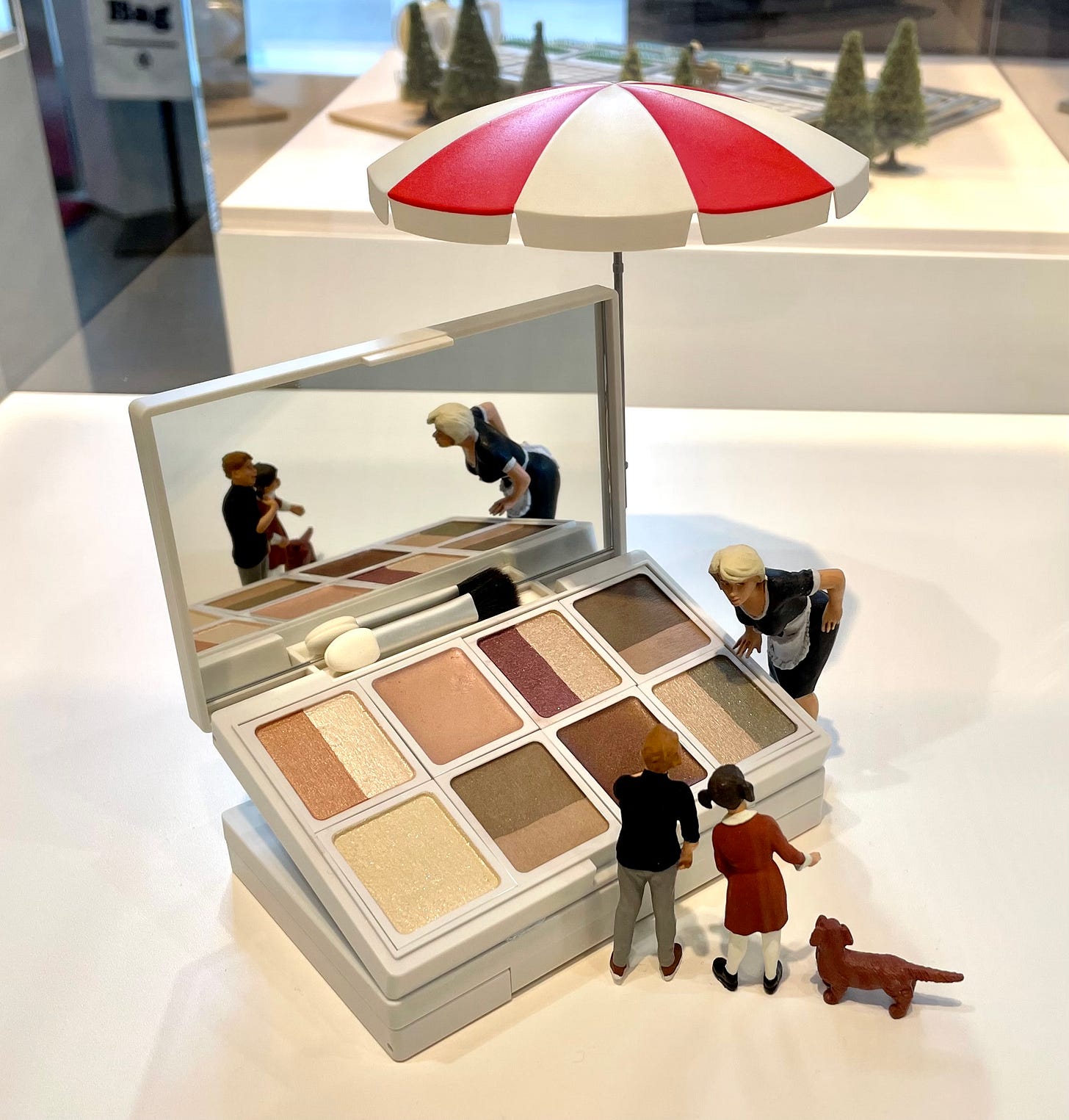A Really Fun Art Exhibit in a Really Unlikely Place
Shoppers on Fifth Avenue in Manhattan may encounter an exhibit that will almost certainly make them smile.
Editor’s Note: This post features many photos of small details. If possible, I strongly recommend viewing it on a computer, not on your phone. — Paul
The best art exhibit I saw last month wasn’t in a museum or gallery. It was at a retail store for a minimalist lifestyle brand.
To explain: The Japanese retail chain Muji, which specializes in products with a no-frills aesthetic, recently commissioned an in-store exhibition by the Japanese artist Tatsuya Tanaka, who specializes in creating dioramas out of everyday objects and teeny-tiny figurines. I first became aware of Tanaka a few months ago, shortly after I published my encomium to the binder clip. IC reader Stacie Orell responded to that piece by pointing me toward one of Tanaka’s videos, which included this brilliant binder-centric scene:
So I was intrigued when I heard that Muji planned to showcase a bunch of new work by Tanaka at their flagship American store in Manhattan. The idea was that Tanaka would create these new dioramas exclusively from Muji products (except for the little figurines). With most companies, that would result in a grotesque branding-overload situation— imagine how many swooshes would appear in an art piece cobbled together from Nike products, for example. Fortunately, Muji has a “no-brand” or “no-logo” philosophy, which pretty much solves that problem.
I went to check out the new dioramas, collectively called Small Muji, last Thursday at the Muji shop at 475 Fifth Avenue in Manhattan. The exhibit lives up to its name — most of the pieces are really small, although each one is accompanied by a big blow-up photo. You can get a sense of the scale from the photo at the top of this post, and here’s another view:
Aside from a couple of pieces that I found underwhelming, it’s a really fun exhibit that rewards (and even necessitates) close attention. Here are some photos of the pieces I liked the best, along with Tanaka’s commentary on each one.











